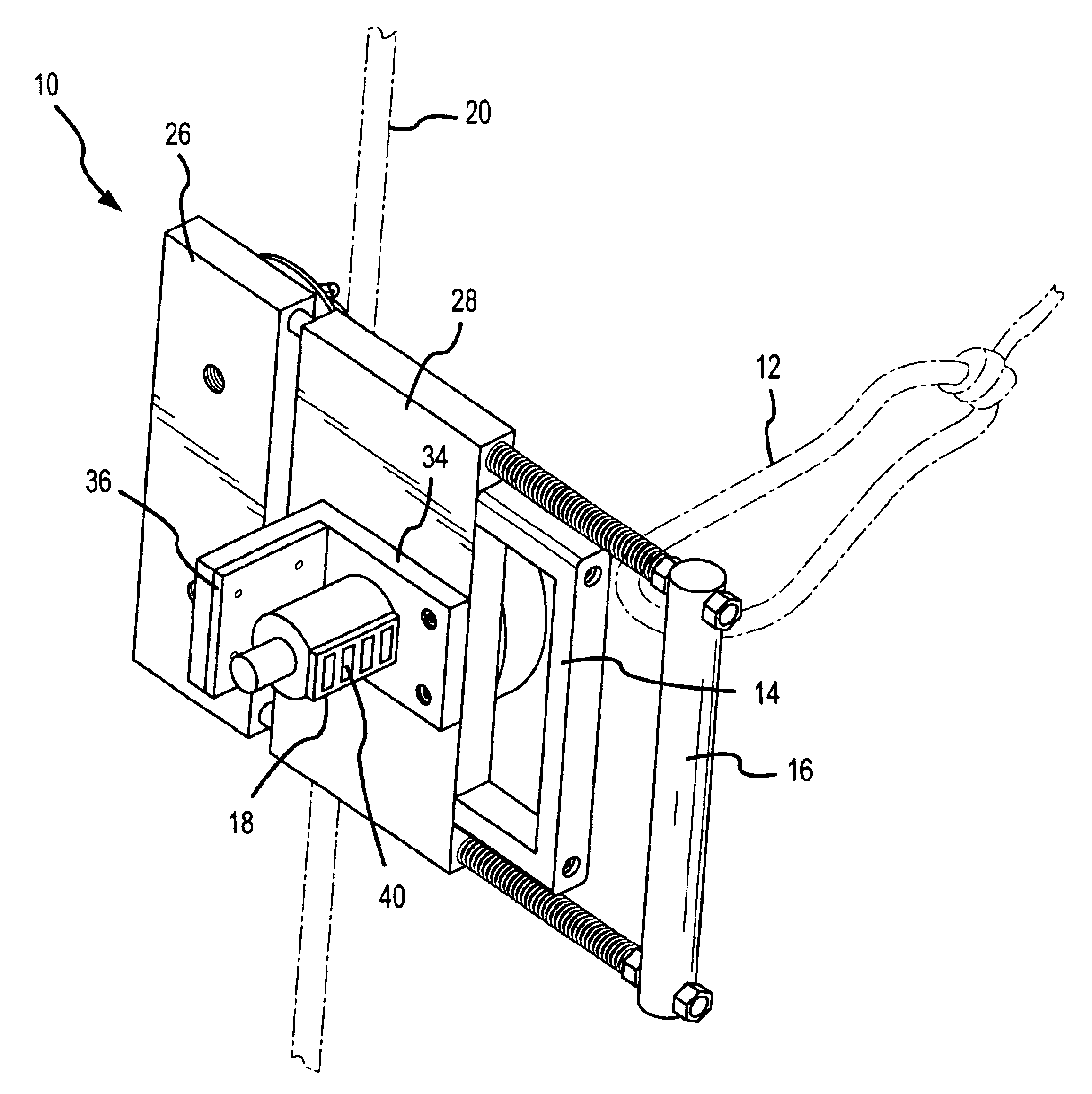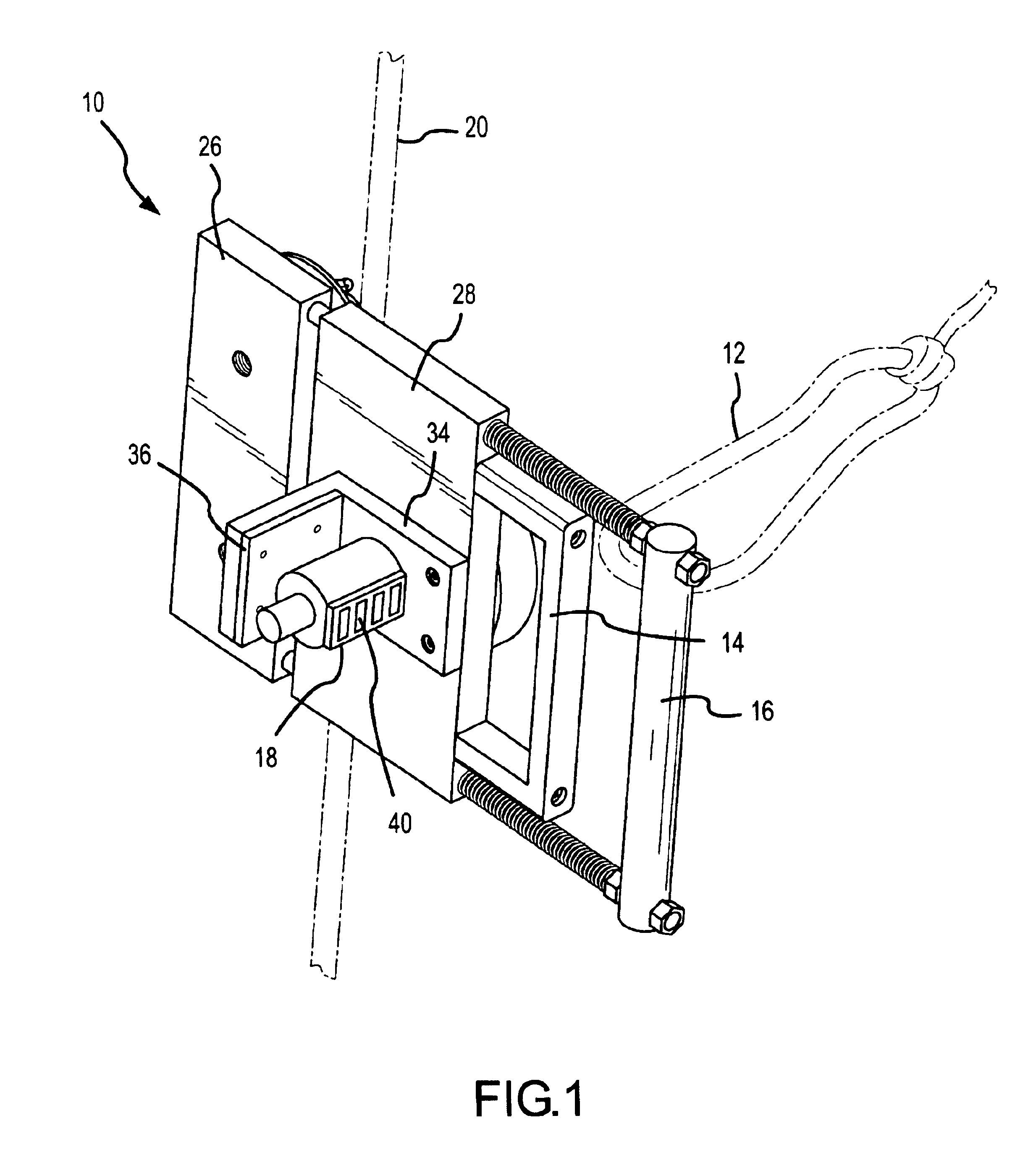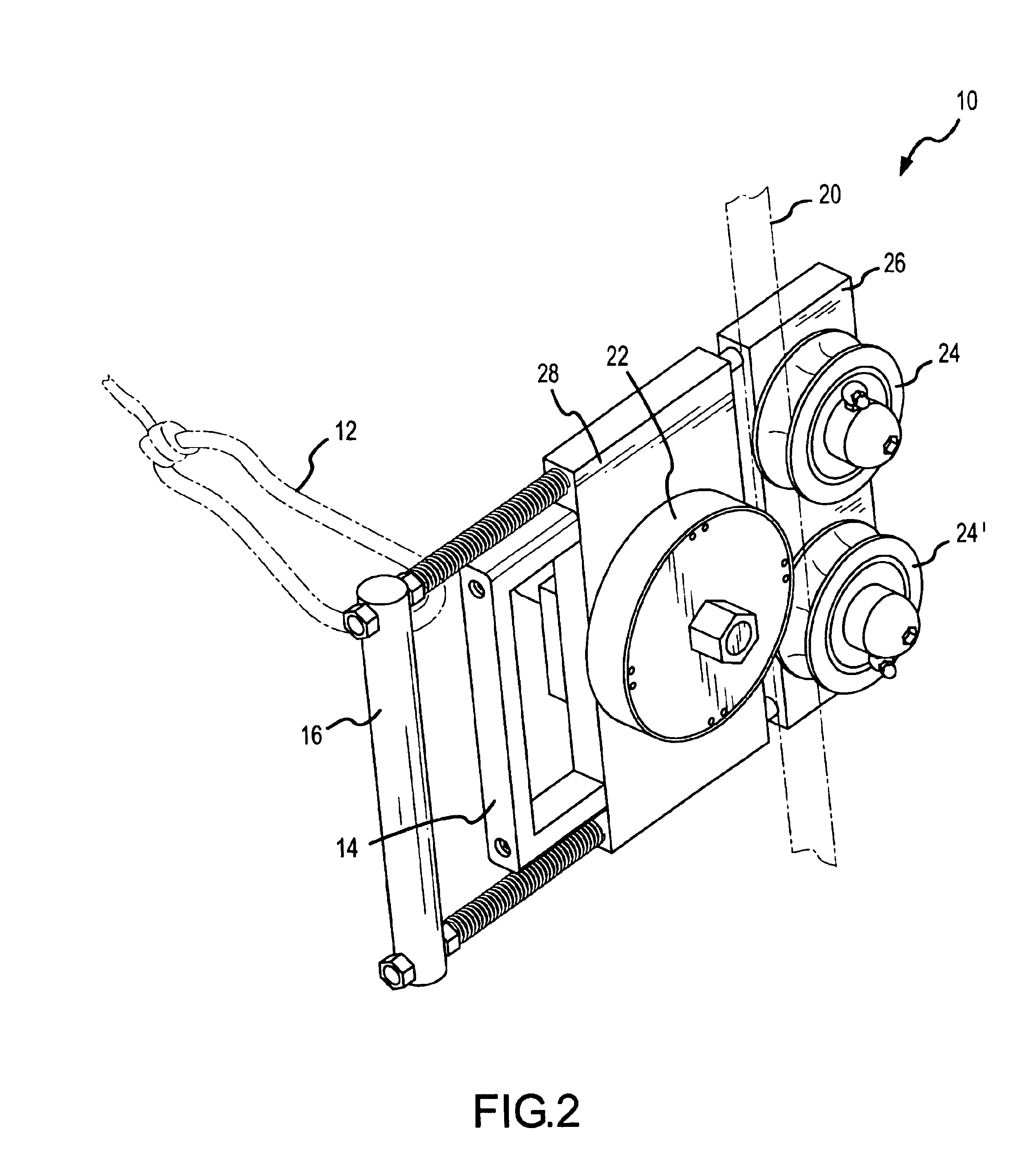Depthometer
a depthometer and depth measurement technology, applied in the field of instruments, can solve the problems of physical contact between users and lines, difficulty in determining the length of the cable lowered into the well, and inability to identify features on the cable,
- Summary
- Abstract
- Description
- Claims
- Application Information
AI Technical Summary
Benefits of technology
Problems solved by technology
Method used
Image
Examples
Embodiment Construction
)
[0025]FIGS. 1, 2 and 3 provide an overview of the operation of depthometer 10 used for measuring a length of an elongate line. Referring to FIG. 1, a perspective front view of depthometer 10 installed upon an elongate line 20 for measuring a length of line 20 is shown. Depthometer 10 engages line 20 in a secure manner when in the installed position.
[0026]First, or inner, handle 14 is used in conjunction with second, or outer, handle 16 to open and close two adjacent and opposing body components, 26 and 28, of the body of depthometer 10 that serve as means for mounting line guides and a wheel. Inner handle 14 and outer handle 16 additionally provide a means for grasping the depthometer 10. When a user grasps inner handle 14 and outer handle 16 and squeezes inner handle 14 towards outer handle 16, first, or main, body component 28 of depthometer 10 is displaced from second, or lower, body component 26. This displacement produces a gap between the body components, wherein a user posit...
PUM
 Login to View More
Login to View More Abstract
Description
Claims
Application Information
 Login to View More
Login to View More - R&D
- Intellectual Property
- Life Sciences
- Materials
- Tech Scout
- Unparalleled Data Quality
- Higher Quality Content
- 60% Fewer Hallucinations
Browse by: Latest US Patents, China's latest patents, Technical Efficacy Thesaurus, Application Domain, Technology Topic, Popular Technical Reports.
© 2025 PatSnap. All rights reserved.Legal|Privacy policy|Modern Slavery Act Transparency Statement|Sitemap|About US| Contact US: help@patsnap.com



